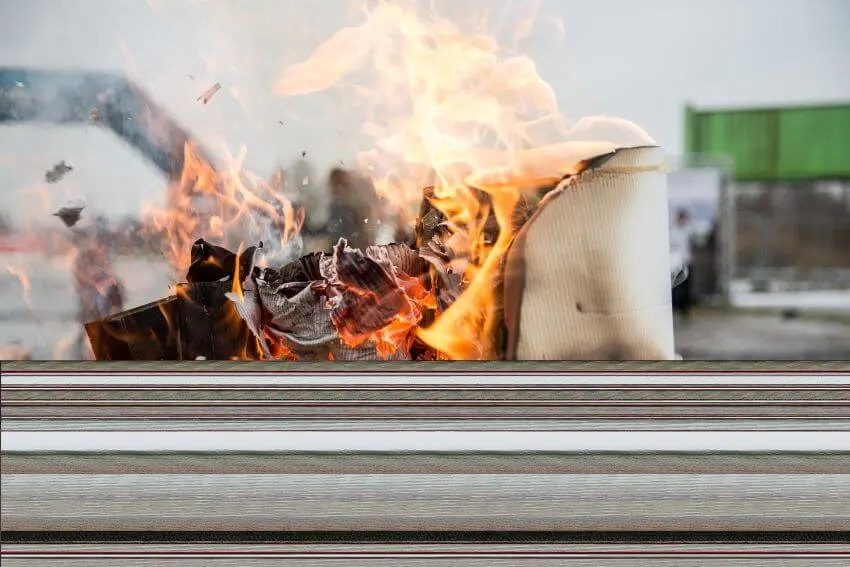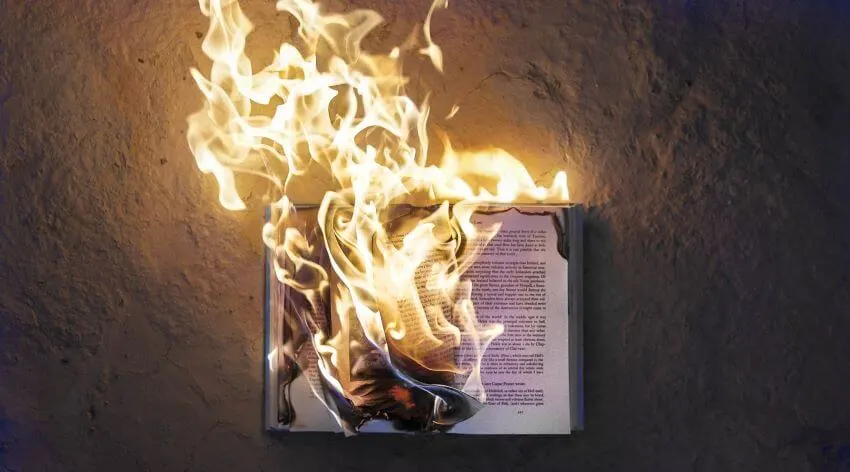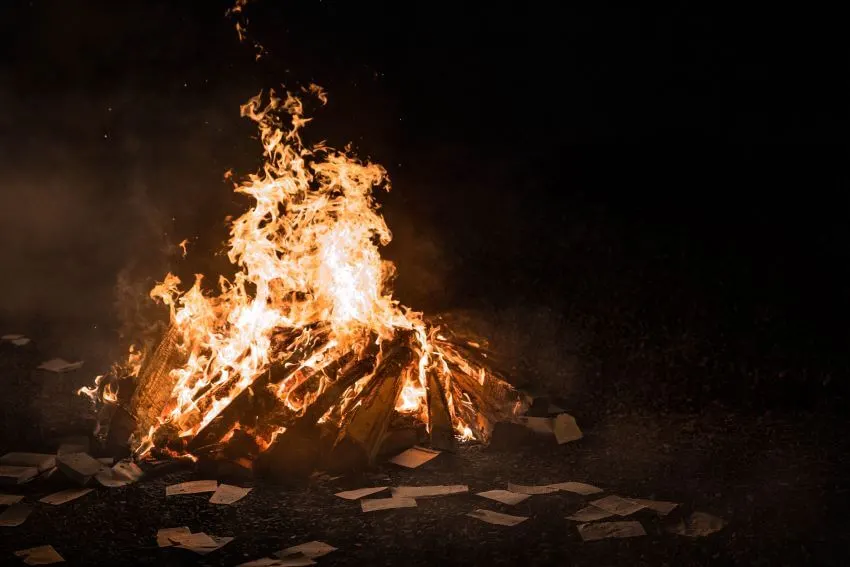Paper is being used every day all over the world. And the disposal of paper waste varies depending on people, some would choose to recycle paper, shred paper, compost paper, or sometimes even burn the paper.
But do we know that burning paper causes great harm to ourselves and the environment? Is burning paper bad for the environment?
What is paper, and what is it made of?

As we all know, paper is made from wood and cut into flat rectangular sheets. So burning paper is the same as burning wood, which releases carbon dioxide and produces ash, just like what happens when you burn wood for firewood.
The paper contains a lot of chemicals, mostly from the printing part. Besides chemicals used for printing, most paper also contains chlorine, which is used to bleach (remove color) wood pulp.
Paper is a key environmental factor as dioxins are commonly used for bleaching paper.
Dioxins accumulate in the fatty tissues of animals and humans and can cause reproductive and developmental problems, damage the immune system, interfere with hormones, and cause cancer.
Different types of papers have different chemical make-up, some may contain acidic ingredients like sulphuric acid or hydrochloric acid.
This makes it difficult to dispose of paper as these chemicals would cause trouble if they are in the wrong place. Other chemicals used in making paper are heavy metals like lead, mercury, chromium, cadmium, etc., which can be very toxic.
See Related: Eco-Friendly Wrapping Paper Options
Why is it bad to burn paper for the environment?

Burning paper can result in a wide range of contaminants being released into your local area. These types of emissions are known as polycyclic aromatic compounds (PACs) and they can cause long-term health problems if they are inhaled.
PACs include benzene, formaldehyde, naphthalene, triphenylene, and pyrene plus many more. These toxic substances contribute to the overall toxicity of the air that people breathe in.
Breathing in these toxins is not only bad for humans, but it can also damage the environment if they are released into the air.
Most of these compounds have a very low boiling point which means at normal temperatures, they are able to become airborne almost immediately after being emitted, affecting people that may be up to five miles away from the pollution.
Burning paper releases toxic chemicals, like acid rain, directly into your local environment. When some chemicals are released into the air, they react with other substances in the atmosphere and turn into different contaminants that can harm us humans.
All of these added together create acid rain; this directly attacks plants and animals on land or in water, burning them slowly from outside to inside.
Burning paper also releases harmful gases like carbon dioxide and nitrogen oxide. Carbon dioxide is a greenhouse gas; this makes the environment warmer. When paper is burned, it contributes to global warming
To burn paper also causes air pollution; when paper burns it forms fine particles which get into our lungs or other parts of our bodies (like our hearts) and cause serious health problems.
See Related: Is Wax Paper Bad for the Environment?
Human Health Hazards
- When paper burns, a lot of poisonous chemicals are released. These toxic substances can affect your lungs and heart.
- Burning any organic material releases carbon monoxide which is a colorless, odorless gas that reduces the oxygen in the air we breathe. Inhaling this chemical makes people dizzy or sleepy. If someone has too much carbon monoxide in their blood, it can damage or kill brain cells.
- It also releases sulfur dioxide and sulfuric acid which add to the production of acid rain.
- Some paper contains chemical ingredients like chlorine bleaching agents. When burned, these chemicals release dioxins into the air which are very dangerous because they can cause reproductive and developmental problems, damage the immune system, interfere with hormones, and also cause cancer.
- Burning paper that contains heavy metals like lead can result in these dangerous materials being released into the air.
See Related: Best States for Sustainable Living
Effects of burning paper on wildlife and plants

The main cause is acid rain. When some chemicals are released into the air they react with other substances in the atmosphere and turn into different contaminants.
These contaminants are known as acid rain. Acid rain can dissolve metals like aluminum, copper, zinc; which is why metal roofs look dull after years of exposure to acid rains.
When more acid is added to water, it becomes acidic. The acid beings to attack the living things in it, just like when you add lemon juice to water the water becomes acidic because of the citric acid in lemon.
When acids are released into lakes or rivers they can burn holes in rocks and also kill fish by burning holes through their shells.
Fish may also die if there is not enough oxygen in the water. Birds that drink from these bodies of water can also be poisoned by acid in their stomachs, which damages their kidneys or kills them if they cannot escape.
When acid rains dissolve metals it is called ” Acid Mine Drainage.” This problem occurs when mining exposes rocks to air and moisture, making minerals like iron sulfide, dissolve into water. The sulfuric acid in rainwater is so strong, it dissolves the iron sulfide and carries toxic chemicals through the watersheds, killing fish.
When paper burns, most of its wood is destroyed but this does not mean that all of it becomes garbage or waste material that is thrown away. But when you burn paper, some of the ashes and chemicals released into the air can travel long distances. When they land on plants or animals it kills them slowly.
Acid rain does not only kill living things that live in the water but also the plants and trees which grow near rivers. These acid rains make leaves wither away or fall off from the tree and can make the bark of a tree change color.
A survey shows that more than 80 percent of agricultural crops, like corn and wheat, are damaged by acid rain. Acid rain also causes metals to dissolve from soil and get into streams and rivers which often kills aquatic animals (like insects) and fish.
See Related: Best Composting Books You Need to Read
Advantages of recycling paper waste

Recycling paper uses only a fraction of the energy compared to making paper from wood pulp. If we compare the process of recycled paper production and new paper production, we will find that making recycled paper takes less than 25% of the amount of water and energy needed to produce new paper, reducing our carbon footprint compared to making virgin paper.
The most important advantage in my opinion, is that when you recycle paper, it reduces the amount of waste in landfills.
On average, in the United States alone there are about 40 million tons of waste paper generated annually. This is bad for us humans as the waste might spread diseases to other animals and could potentially affect how much oxygen is in our air.
Burning paper waste also creates air pollution, emitting toxic gases like carbon dioxide and nitrogen oxide. Not only that, but it is bad for the overall health of our planet because we could end up with a very polluted environment, which would directly affect all living things on the planet.
Waste management helps reduce environmental problems by breaking down pollutants into reusable resources.
One of the most common forms of recycling is to convert old newspapers into new paper because it reduces the need for trees during virgin paper production, which also helps combat deforestation.
Most importantly, burning up our trees can release a lot of carbon dioxide into the atmosphere, contributing to global warming and making our planet warmer.
See Related: Are Brown Paper Bags Compostable?
Benefits of using recycled paper
- Reduces the amount of waste in landfills
- It uses less water and energy compared to the normal paper manufacturing process
- Prevents deforestation
- Reduces the amount of carbon dioxide in the atmosphere
- Reduces air pollution
See Related: Is Parchment Paper Compostable?
Conclusion
So, is burning paper bad for the environment? Yes, burning paper is bad for the environment. Burning paper degrades quickly and releases particles that cause acid rain, creating more health problems like asthma, heart disease, and other health problems.
It also contributes to global warming by emitting carbon dioxide. Just like fossil fuels do. Paper products are composed of organic materials, which means they burn easily using any ignition source usually fire or electricity (though some chemicals can be used instead).
Paper burns at approximately 215 degrees Celsius (420 degrees Fahrenheit), at which point the cellulose in paper breaks down into gasses, including carbon dioxide emissions, water vapor, and various other hydrocarbons that produce dangerous fumes.
Paper can be recycled using different methods, such as using water to wash the material before shredding it into fibers, which are then put into a machine to make new paper, or by squashing old newspapers into new ones without water.
Recycling paper products reduces the amount of waste in landfills. It uses less energy compared to the virgin paper manufacturing process, so burning our waste paper should be the last thing we do.
FAQs
Is it better to burn or throw away paper?
Burning paper is not better than throwing it away. Burning paper releases harmful pollutants into the air, including carbon dioxide, carbon monoxide, and particulate matter. Additionally, burning paper contributes to deforestation and the loss of important carbon sinks, crucial for mitigating climate change. Therefore, it is recommended to recycle paper whenever possible or throw it away in a designated waste bin.
Is it bad to burn paper?
Burning paper is bad for the environment. When burned, paper releases harmful pollutants into the air, including carbon monoxide, nitrogen oxides, and particulate matter. Additionally, burning paper contributes to deforestation, as it encourages the destruction of trees for paper production.
Is it better to burn cardboard or throw it away?
Is burning cardboard better than throwing it away? Burning cardboard can be harmful to the environment due to the release of pollutants such as carbon dioxide, nitrogen oxides, and sulfur dioxide. Additionally, burning cardboard can be a fire hazard and release toxic chemicals if it contains synthetic materials or chemicals. It is generally better to recycle cardboard instead of burning it to reduce waste and environmental impact.
Related Resources
